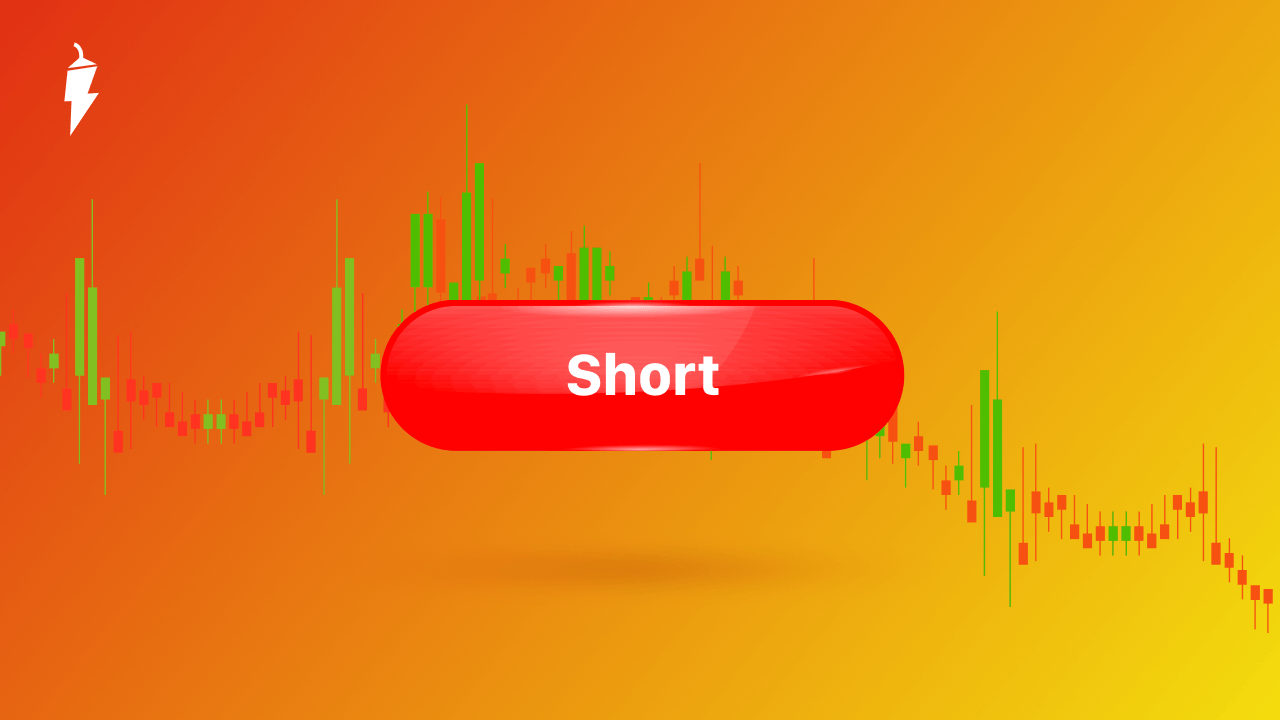Short selling (shorting) is an investment or trading strategy that speculates on the decline in a stock or other security’s price 💰
To profit from a stock when its value drops, the investor borrows the asset through a brokerage company and sells it. This can only be possible if somebody previously owned the asset and is willing to lend it out.
Short sellers buy a stock and then sell it, hoping the price will fall over time. If the price 📈 rises, they can buy back the stock at a lower price than when they sold it and make the difference as a profit.
Thanks to this specificity, traders often refer to shorting as a silent underdog. But is it justified? 🤔
When shorting makes sense
At first glance, you might think that short-selling would be just as common as owning stock. However, relatively few investors use the short-selling strategy.
One reason for that is general market behavior. Most investors own 📊 stocks, funds, and other investments that they want to see a rise in value. The stock market can fluctuate dramatically over short time periods, but over the long term, it has a clear upward bias. For long-term investors, owning stocks has been a much better order than short-selling the entire stock market. Shorting, if used at all, is best suited as a short-term profit strategy.
Sometimes, you’ll find an investment that will drop over time. When this is the case, there is a possibility when you sell that investment to benefit from the decrease of value.
Even though short selling is more complicated than simply going out and buying a stock, it could allow you to make money 💸 when others are losing their investments.
Example of short selling for a profit
Imagine a trader who believes that Amazon stocks-currently trading at $150 — will decline in price in the next three months. They borrow 100 shares and sell them to another investor. The trader is now “short” 100 shares since they sold something that they did not own but had borrowed. The short sale was only made possible by borrowing the shares, which may not always be available if the stock is already heavily shorted by other traders.
A week 🕗 later, the company whose shares were shorted reported negative financial results for the quarter, and the stock falls to $120. The trader decides to close the short position and buys 100 shares for $120 on the open market to replace the borrowed shares. The trader’s profit on the short sale, excluding commissions and interest on the margin account, is $3,000: ($150 – $120 = $30 x 100 shares = $3,000).
The risks of shorting
The big risk of short selling is that you could guess wrong and the stock may go up. And the risk of guessing wrong is higher with short selling than with traditional investing. Here’s why.
When you buy a stock, your upside is unlimited, while the maximum you can lose is all of your investment or 100% (in the event that stock price falls to $0). But, with short selling, the exact opposite is true. Your maximum profit is 100% (again if the stock drops to $0) while your loss potential is technically infinite.
Other notable risks of short selling include:
- Appreciation trend.
- A short squeeze.
- Margin dangers.
However, you can minimize risk by using diversification and other strategies for balanced trading in financial markets.
Why do investors go short?
Short selling is used for speculation and hedging. Speculators use short selling to anticipate a decrease in a specific security or across the market. Hedgers will use this strategy to protect gains in a security or hedge against losses.
Institutional investors and individuals that invest their money can short sell stocks to make a profit, but also to hedge other investments. 📌 In addition, short selling allows for profit-making in a neutral or declining market.
Pros and Cons of shorting
Pros
- Possibility of profits in the short term
- Little initial capital required
- Leveraged investments are possible
- Hedge against other holdings
Cons
- Higher exposure to losses
- Margin account is necessary
- Margin interest incurred
- Short squeezes
Conclusion
Short selling is a risky investment strategy ⚡ but it can be lucrative if you know what you’re doing. In this article, we taught you how an investor could make money short-selling stocks by buying shares and then selling them immediately (or within a few minutes) to someone else who believes the stock could decline in value. This is an extremely fast-paced market, so knowing when to pull the trigger and sell your shares is essential for making money short-selling stocks.
Summary
- Short sellers are predicting that a stock will drop in price.
- Short sellers bet on, and profit from, a drop in a security’s price. This can be contrasted with long investors who want the price to go up.
- Short selling is riskier than going long on a stock because, theoretically, there is no limit to the amount you could lose.
- When successful, short selling could possibly bring an investor a decent profit in the short term because stocks tend to lose value faster than they appreciate.


